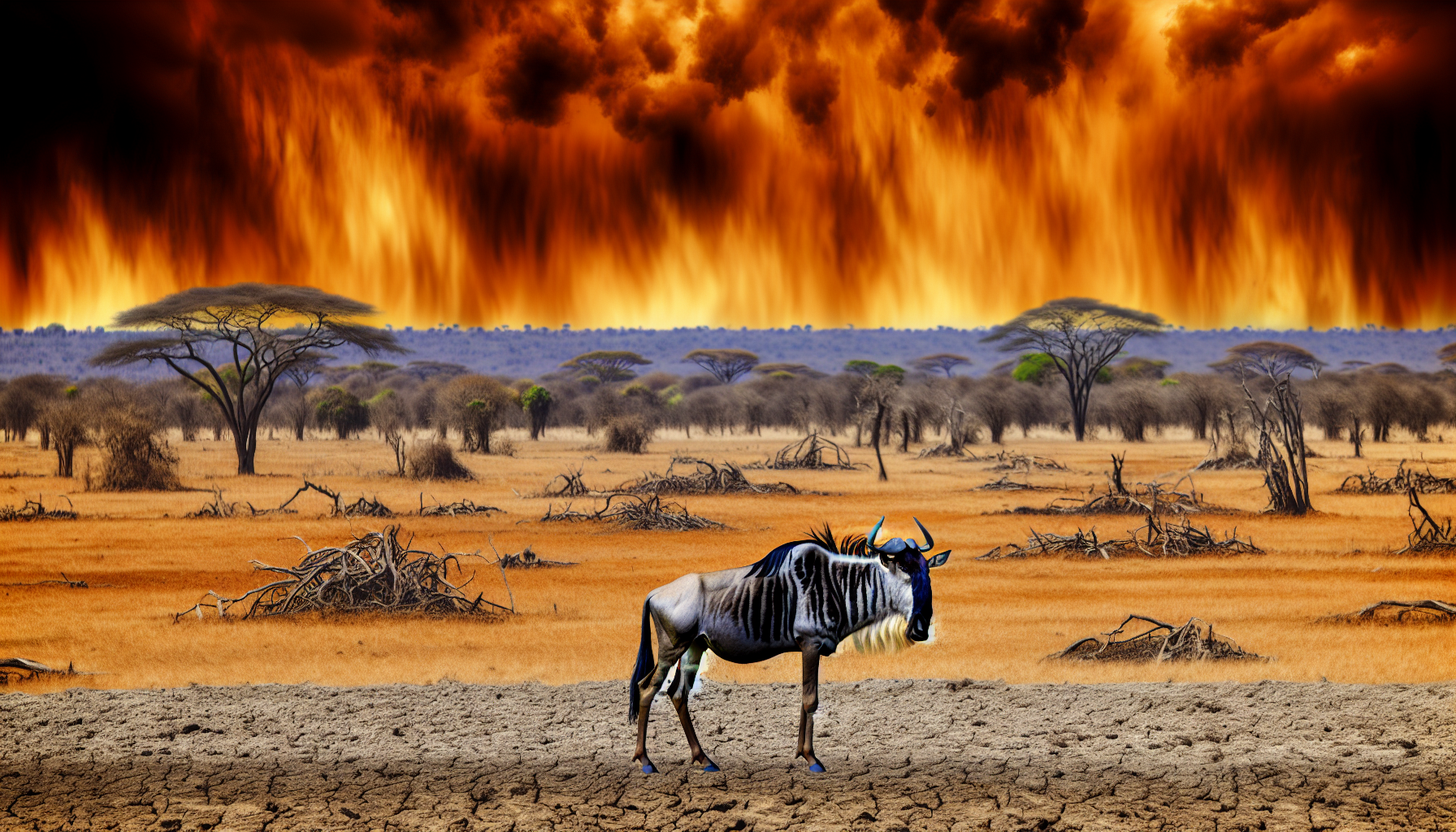In an age where the symphony of nature has dwindled to a fragmented whisper, the earth witnesses the melancholic final act of a once-celebrated annual spectacle – The Great Migration. The setting is disparate fragments of savannahs gasping through the blanket of industrial smoke and heatwaves that have claimed the skies. The cast is a strained lineage of creatures, skeletons of their ancestors’ grandeur, traipsing across this scorched stage.
This, dear readers, is the Nature’s Last March, where the stoic survivors of climate calamities enact their inherited instinct to migrate amidst the imminent collapse of their world. This grim parade is marred, not by predators seeking their flesh, but by the predatory actions of humanity’s past – an endless hunger for expansion and exploitation.
Once vast herds of wildebeest, zebras, and antelopes thundered across the plains, their numbers blotting out the horizon. Today, their fragmented herds assemble, shadows beneath the haunting silence where birdsong should resonate, as noted in the chilling account of ‘Muted Canopies – The Silent Scream of Vanishing Birds’. In this desolate recital, wings that once guided and encouraged the marchers have fallen silent, signaling an irreversible thread torn from the web of life.
The remnant pathways, etched into the very essence of these creatures, have become roads to nowhere – the famed rivers they once forded are now dry channels, the grasslands turned to dust bowls. The insatiable thirst of the earth echoes the parched throats of the migrants – a poetic injustice for a journey’s purpose was always the quest for water and greener pastures.
Scientific reports, the dirges of our time, detail with clinical precision how rising temperatures and erratic rainfall have redrawn the map of life, restricting migration routes and breeding sanctuaries. Their numbers, once in the millions, have been cleaved by habitat loss, human encroachment, and the veiled assassin known as climate change.
Yet, even as the procession inches towards oblivion, there is a grim beauty in their resolve. The ribbed flanks of the wildebeest and the hollowed eyes of the zebra reflect the resignation to fate shared by all denizens of this Green Dystopia. There is no heroic battle cry here, no eleventh-hour redemption – merely the final march, the closing of a book whose pages have grown thin and brittle under the scorching sun.
Ironically, amidst the heart-wrenching scene, humanity’s own existence wavers on the precipice. For as these ancients of the savannah falter, so too does the delicate balance that sustains our crops, our water, our very breath. The ecological dominoes toppled by our forebears continue to cascade beyond our control, a chain reaction with no emergency brake.
The Nature’s Last March is no mere metaphor; it is the tangible evidence of a future written by our collective hand – an epitaph for the immense spectacle that could once bring travelers from far lands to witness the raw pulse of life itself. Absent are those travelers now, for there is little spectacle left in witnessing the staggered, faint footsteps of the few that remain.
As the day closes and the feeble silhouettes carry on undeterred by the sinking sun, one wonders whether this is the peace that comes before the end – a world hollowed out, echoing with the ghosts of the great herds and flocks that once graced our planet. In their plight, a silent question lingers: What will be the final chapter for us, the inadvertent authors of this dystopian testament?
We end this account not with a plea for action or a glimmer of hope, as is the creed of this publication, but with an acknowledgment of a requiem. We are but distant observers to Nature’s Last March, the inevitable finale to The Great Migration, a pageant of perseverance in the face of a foretold end, wrought by our own hands. The story, dear readers, concludes in whispers carried away by a hot, desolate wind.
